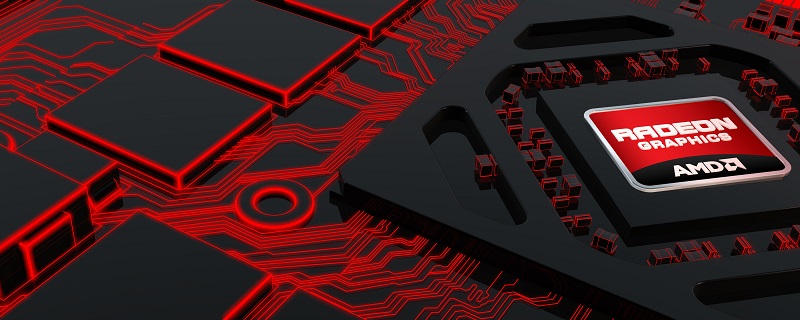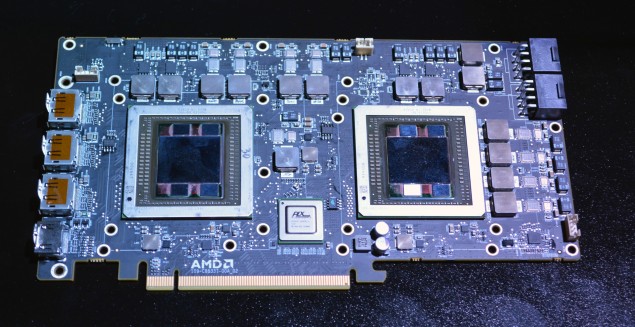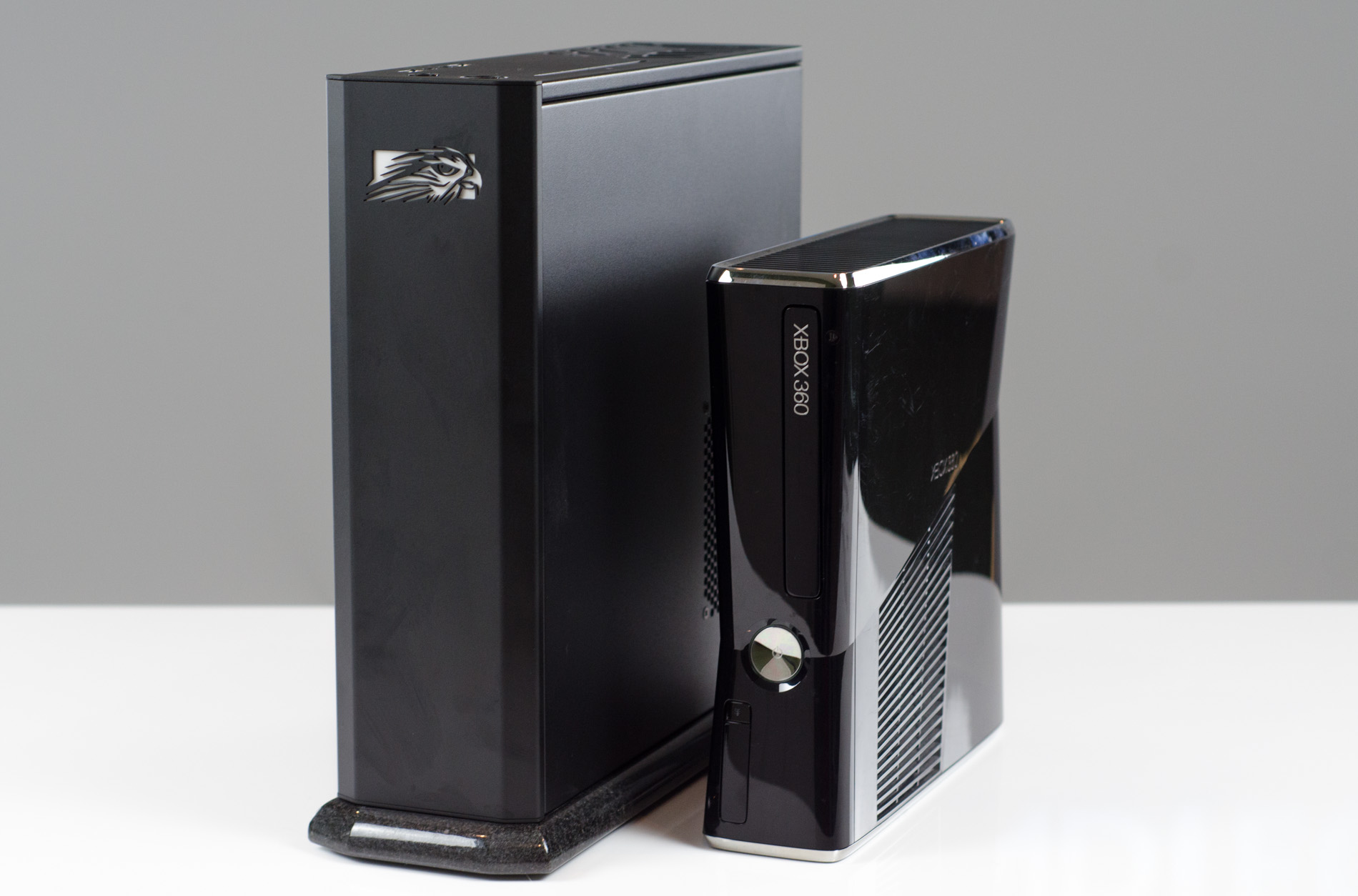AMD Demos Dual Fiji GPU with HTC Vive at VRLA in an ultra compact case
AMD Demos Dual Fiji GPU with HTC Vive at VRLA in an ultra compact case
Â
AMD has shown off their upcoming Dual Fiji GPU powering an HTC Vive headset at an event called Virtual Reality Los Angeles (VRLA), where AMD was able to fit their dual Fiji powerhouse inside Falcon Northwest’s compact Tiki chassis, a case which is not much larger than an Xbox 360.Â
Â
Prototype Tiki from @FalconNW powering #htcvive with dual Fiji @AMDRadeon at the #vrla pic.twitter.com/2gCxgzucB5
— Antal Tungler (@coloredrocks) January 23, 2016
Samples of AMD’s upcoming dual Fiji GPU have been floating around since November of last year, with DICE’s Johan Andersson having his preview unit leak during shipping, suggesting that the GPU will be liquid cooled like the R9 Fury X, meaning that the GPU should have some pretty powerful cooling.
AMD plans on releasing their Dual Fiji/Gemini at the same time that VR HMDs become commercially available, which should be pretty soon, within the next two months. Â Â
With the Fury X2, or whatever AMD decided to call this GPU, AMD is aiming to boost 4K-performance with up to 80%, according to internal documents. Both Fiji-XT GPUs in the Fury X2 will have clock speeds of up to 1GHz while the stacked 8GB of HBM will run at 500MHz. A full list of leaked specifications, courtesy of WCCFtech, can be found below.
Â
| GPU | Â Fiji XT x2 (Gemini) |
|
Stream Processors |
8192 |
|
GCN Compute Units |
128 |
| Render Output Units | 128 |
| Texture Mapping Units | 512 |
| GPU Frequency | Up to 1GHz |
| Memory | 8GB HBM (4GB per GPU) |
| Memory Interface | 8192bit (4096 per GPU) |
| Memory Frequency | 500MHz |
| Effective Memory Speed | 1Gbps |
| Memory Bandwidth | 1 Terabyte per second |
| Cooling Solution | Liquid cooling |
| Performance (FP32) | 16.38 TFLOPS |
| TDP | Approx. 375W |
| GFlops/watt | Approx. 43.7 |
| Launch Price | TBA |
| Launch Date | Q2 2016? |
Â
Â
With VR being such a demanding application of GPU technology it is expected that VR gaming will require you to own a very powerful PC, more so than the Oculus Rift’s requirements state if you want to play your games with higher levels of visual fidelity, especially over the next few years as VR games become more advanced.
Â
You can join the discussion on AMD’s Dual Fiji GPU being shown powering an HTC Vive inside a compact PC case on the OC3D Forums.
Â
AMD has Demoed their Dual Fiji GPU with an HTC Vive at VRLA in a very compact form factor. https://t.co/SGfOHed1pc pic.twitter.com/axgAl4w5eT
— OC3D (@OC3D) January 25, 2016





